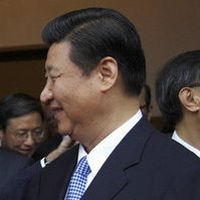BEIJING -- China's expanding economic engagement with Latin America has been largely based on securing access to the continent's abundant natural resources. But despite the opportunities presented by the wave of Chinese capital, concerns have arisen over the asymmetric and one-dimensional nature of China's relations in the region, which generally conform to the classic center-periphery model. Chinese Vice President Xi Jinping's recent three-country tour of the continent was aimed at addressing these concerns, outlining a blueprint for how China's incoming leadership intends to deepen its international relations and consolidate recent economic foreign policy gains.
In 2010, more than 90 percent of China's $180 billion trade and investment in Latin America was resource-based. The sheer scale of this number means China has emerged as a genuine counterbalance to U.S. primacy in the region -- economically, at least. But, as in other regions, China has been less successful in cultivating the auxiliary ties necessary to consolidate and secure new supply-chain connections, a key strategic objective as the country enters an era of unprecedented dependence on basic-commodity imports.
Along with the general prominence of the "China threat" paradigm in international discourse, a diverse range of more localized concerns have also arisen as Chinese engagement has expanded into Latin America. These include environmental risks, particularly to sensitive Amazonian ecosystems; the potentially destabilizing impacts of low-cost Chinese imports on regional economies, as in Brazil; and political differences, often complicated by the legacy of previous diplomatic tensions, as is the case with Cuba or Paraguay.

